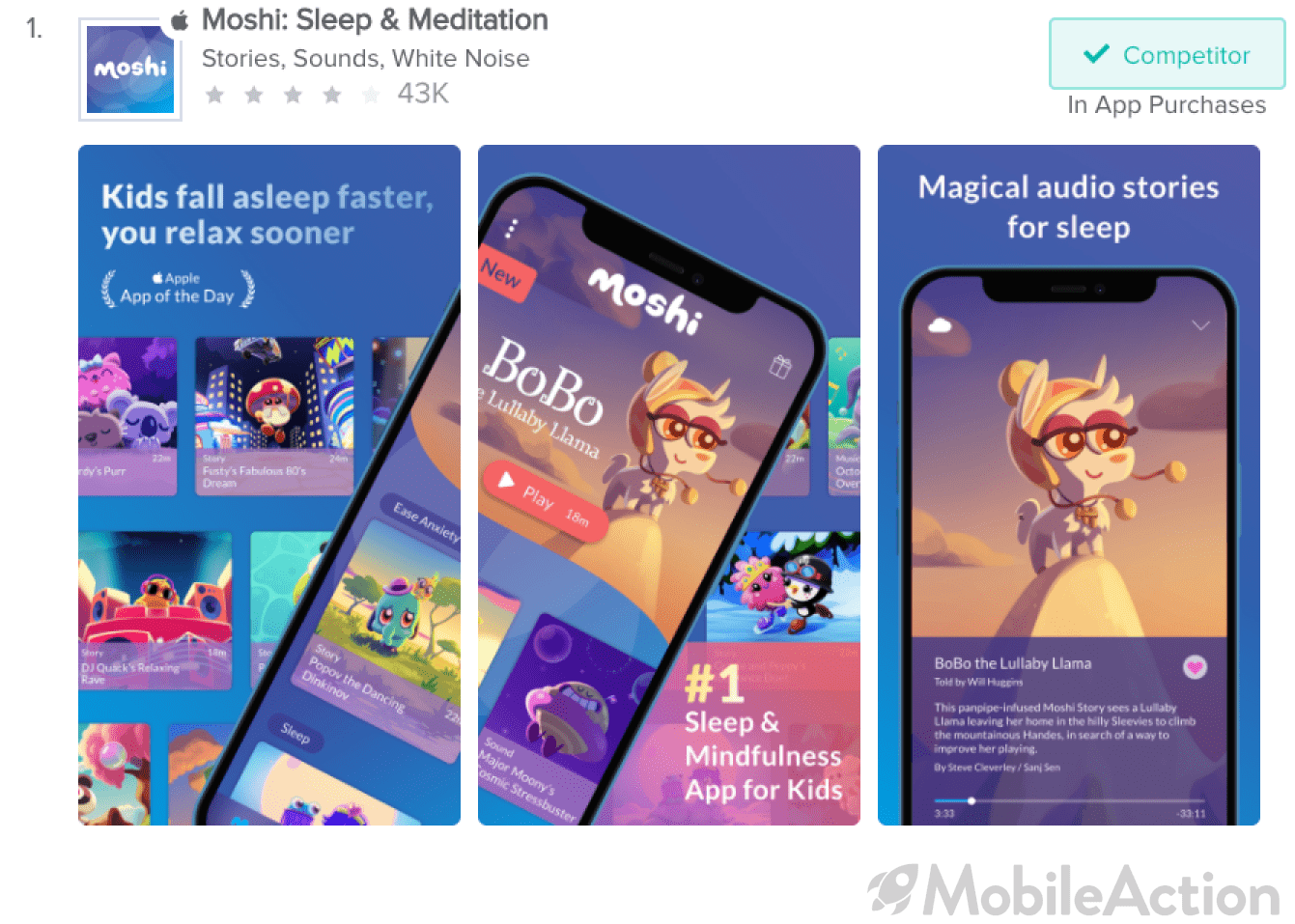App Store keyword optimization is one of the most budget-friendly ways if you are thinking about how to promote an app. By finding the right keywords to include in your indexed factors, you can boost app download significantly.
App Store Optimization is the process of making your app more visible in the app stores. By conducting app store keyword optimization, you will increase your visibility score. In other words, your app will be easier to come across in app store search results. App Store Optimization also includes Conversion Optimization, which allows app developers to increase the ratio of installs per listing page visit.
The app store keyword optimization cycle can be described under 3 main areas. Keyword Research, Keyword Selection, and Keyword Targeting. This article will focus on the first step, which is app store keyword research.
ASO tools such as MobileAction makes the process much easier for app marketers.
This post is going to show the easy and efficient way of conducting keyword research. After having the right keywords in your pool, you will be ready to take your mobile app marketing strategy to the next level.
1. Finding Competitors
Finding competitors should be the first step of your ASO keyword research plan. Using the most popular apps or most successful apps as reference points can be beneficial for your app user acquisition strategy.
Let us assume that we are trying to conduct keyword research for our new meditation app.
The Keyword Tracking tool is where all the keywords you gather will be collected. Using different tools, you will want to create a rather large list of keywords to be used in further steps.
The first way to find competitors is through using generic keywords. As we are marketing a meditation app, it is reasonable to assume that our competitors will be ranking on the keyword “meditation”.

With a search score of 58, this keyword seems to be getting good amounts of traffic. Now let’s check the organic ranking results to locate some of our competitors.

We have found 3 possible competitors almost instantly. Let’s add these apps to our competitor list. In addition to Generic Keywords, brand names are also useful for discovering new competitors. By checking out which apps are ranking for your main competitors’ brand name (or your own brand name), you can discover even more contenders. Let’s check out which apps are ranking for the brand name “Calm”.

As you can see, we have found another competitor, Relax Melodies. Through repeating this process of using generic and brand keywords to find similar apps, try to populate your competitor list.
2. Keyword Research Tool
You might be thinking that meditation is a very obvious search term and it might not be as easy to find generic keywords which are not as straightforward. For example, what if people are searching for “meditation apps free for kids” or any other combination. Simply using the generic keywords you come up with might not be enough.
That is why a seed keyword tool such as the one we prove at MobileAction can be incredibly helpful. By using such a tool you can discover new long-tail keywords which have high user intent. Basically, if a user is typing those exact app store keywords in the search bar, they are probably going to download an app.
Discovering such keywords has yet another advantage. It is not up for debate that “meditation” is a popular keyword. That is why nearly 10,000 apps are ranking for it organically. This results in a chance score of 51%, which basically means that it is not that easy to rank near the top for this keyword.

For example, we can see that meditation timer and binaural beats are related keywords to meditation. Assuming that our app is related to these keywords (provides a meditation timer or produces binaural beats), perhaps we can target these keywords.

We can see that the search score is lower than for the keyword meditation. However, this is not necessarily a bad thing. The amount of apps ranking for these keywords is considerably less, resulting in much higher chances scores. If we include these keywords in our metadata, it is much more likely for our app to rank for them. Using seed keywords, try to identify related search terms and include them in your tracking list.
3. Keyword Spy
Now let’s get back to the competitors we found and how we can utilize them for our app store keyword optimization strategy. The keywords that your competitors include in their metadata are extremely important.

Using App Intelligence, we can see that one of our competitors, Moshi, is using the keywords Stories, Sounds & White Noise in their subtitle. If you are conducting Play Store app optimization, finding the keywords your competitors are targeting might be easier.
However, in the App Store, it is not possible to see the keywords your competitors are using in their iOS Keyword Field. That is why in addition to their metadata, you should also pay extra attention to their paid keywords (if they run Apple Search Ads), as well as popular category keywords. The Keyword Spy tool is the easiest way to achieve this.

Naturally, not every keyword will bring in the same amount of organic downloads. That is why you should also take a look at the keywords that your competitors are receiving their organic downloads from. Thus looking at these keywords will allow you to understand the kind of search terms that are preferred by users to find similar apps.

4. Finding Local Keywords
Do not forget that keyword research is optimally done in a local way. Thus increasing your app ranking in the United States does not necessarily mean more organic downloads in Brazil. This is not true only for ASO but also for mobile ad intelligence applications.
Between storefronts, both language and type of searches can differ according to the local culture. Through app localization, you will be able to increase your rankings in different stores.
When choosing the right keywords, it is essential that they are related to your app. When conducting localization in a region where the language is not English, this might be an issue. That is why we provide a Translation Module in the relevant ASO tools so users can track keywords only if they are related to their app.

In this example, we can directly see the translation of Japanese words, allowing us to make more accurate decisions about whether or not to include these keywords in our tracking list.
Interestingly, In Japan, we can see some unique keywords such as “Relieve Frustration” and “Healing Sounds”. Once again proving the importance of considering local trends during app store optimization.

As you can see, the keywords that we have encountered in numerous tools have been added to our tracking list. Now that you know how to keywords research, you are ready to select the right keywords and include them in your app store optimization strategy.
Mobile App Intelligence is invaluable when figuring out how to promote your app. This article covered the first step of app store keyword optimization, keyword research. If you would like to take your App Store Optimization to the next level, schedule a free demo with our experts today!




